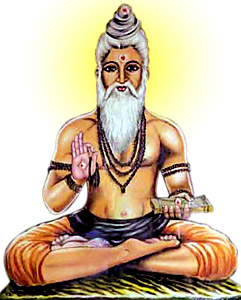Aham Brahmasmi means I am Brahman. This Mahavakya of Hinduism depicts the idea that who the real person is and that absolute is the reality. A gold bracelet that can speak explains this idea. The aspirant has to imagine two possibilities of what a gold bracelet might say if it could speak. The bracelet might say one of these two things, either "I am a bracelet!" or "I am gold!".
Then the question arises is that which answer is more true and more everlasting. Although, apparently it seems that bracelet seems more encompassing, since both bracelet and gold at the same time. However, the bracelet aspect is not eternal. It is temporary. The particular shape in which the gold was moulded makes the difference.
 Gold is everlasting and thus "I am gold," everlasting, ever pure, and not subject to death, decay, and decomposition can also be considered as true. This is also true that gold is not everlasting either, but in the metaphor, gold is being only used as an example. It should be noted that this metaphor might sound similar to the ones above, regarding the impermanence of a bracelet and the durability of the gold, again if the instance is considered as a metaphor.
Gold is everlasting and thus "I am gold," everlasting, ever pure, and not subject to death, decay, and decomposition can also be considered as true. This is also true that gold is not everlasting either, but in the metaphor, gold is being only used as an example. It should be noted that this metaphor might sound similar to the ones above, regarding the impermanence of a bracelet and the durability of the gold, again if the instance is considered as a metaphor.
However, the concept of Aham Brahmasmi reflects the notion "I am gold!" or "I am brahman!" is an internal experience compared to the statement, "The bracelet is gold!". Although the two insights are separate, they finally merge to be the same. Similarly, it is very strange to realize, in direct experience, "I am brahman!" than one of the statements saying that, "Brahman alone is real!". This statement whatsoever seems to be about the world out there and is a valid perspective. "I am brahman!" is an inner declaration of who I am, in here and is also a valid perspective.
Truth is believed to come in the stillness of intuitive flash. The truth of a Mahavakya comes in the same way and is progressively deeper as one practice. The arrival of a Mahvakya is not merely an intellectual process, as it might appear to be by explaining the gold metaphor. The metaphors are used as a means of explaining the principles of Hinduism but this is not the end of the process. Practically, such explanations are only the beginning of the process. The real achievement is in the still, silent reflection residing in the inner workshop of contemplation and yoga meditation.
The initial realisations of a Yogi come somewhat like the creative process when he is trying to solve some problem in daily life. He thinks and thinks harder and then finally let go into silence. Then, suddenly, the creative idea comes up, giving him the solution to his problem. The meditation on the Mahavakyas is somewhat like that at first and later it goes into deeper meditation. One may experience his real, innate self as being like the gold or the clay, or like a wave in an ocean of bliss, that realizes the wave is also the ocean.
With the help of all such metaphors, the Mahavakyas are explained through these tools of explanation and the insight of each person will come in the framework of their own culture and religion, and will not seem unknown or unnatural. One`s religious values are not violated, but rather, are affirmed. The person who wants to experience the truth of Aham Brahmasmi, he has to reflect on the oneness, or brahman, and the meaning. He should allow his attention to focus on Aham Brahmasmi Mahavakya; such as Brahman is one, without a second. The aspirant should ask questions to himself, such as "Who am I? Am I this body, or do I have a body? Am I this breath, or is this breath just flowing? Am I this mind, or is this mind an expression of some deeper truth? Who am I, really? Who am I?"
Inside the chamber of his own being, one should declare to himself "I am Brahman, I am not only a wave, I am made of ocean. I am ocean!". The aspirant should allow the truth of the statements to expand and he should practice such affirmations only if he has achieved complete reflection on them, and find the real truth behind. This is not about selling one`s thoughts and outlook, but on affirming what one actually knows. As person does the practice of Aham Brahmasmi meditation, he might be engaged in his daily life, sitting straight in a formal yoga meditation posture or sometimes resting comfortably in a chair, on a sofa, or lying down in a relaxed position. There is a great diversity of settings in which one can do this type of meditation to understand the real meaning of Aham Brahmasmi.




















